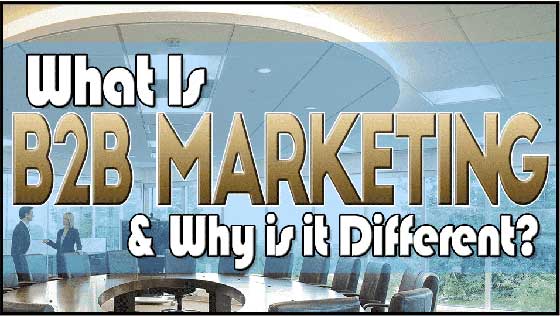Over the past two decades B2B marketing has emerged as a separate and distinct discipline in its own right, with significantly different marketing practices from those used to reach the consumer or end user. This has implications that marketers and business owners need to take into account when you’re implementing a comprehensive inbound marketing strategy, to maximize the effectiveness of your investment.
Here are the main criteria that make B2B marketing different and unique.
Table of Contents
ToggleProduct Types; What to Expect
In B2B marketing, products are different from those that are typically distributed in the B2C environment. Firstly, they are often more complex and require a higher level of knowledge and expertise on the part of the buyer than consumer products do. Even in the case of consumer products that are considered more complex, such as motor vehicles or computers, the buyer’s choice is based on fairly basic criteria. A car buyer might select a new vehicle based on aesthetics, speed, quality, reputation and comfort, while a private user buying a computer will take account of the unit’s weight, reliability and the quantity of storage.
With business products, issues such as appearance are seldom a factor. The purchase of industrial equipment, for example, requires the buyer to know the purpose of the item, its integration into the purchasing company’s processes and the deliverables expected from it. He (or she) needs to clearly understand the role of the purchase in contributing to the company’s operations and by extension, its profitability. This means that the marketing process needs to fulfill the buyer’s requirements for
- Detailed Technical Specifications
- In-depth Analyses of the Output & Functionality
- Operational Costs
- Productivity Statistics
- Return on Investment (ROI)
In addition, companies that sell goods or services in a B2B marketplace typically provide either high cost items (in small or large quantities) or low cost items in large quantities. Regardless of the size of the item, this means the overall purchase cost in B2B marketing is generally higher than it is in B2C. Even products not intended for resale are destined to generate profit in some form or another, which makes ROI an important factor.
Audience Attributes
Target markets are different in B2B, with more focus on C-level leadership than exists in consumer marketing. Prospective buyers are typically more sophisticated, at least in terms of their specific industry, and more knowledgeable about the technical aspects of the product. Target market segments are usually smaller groups and segmentation is based less on behaviors and more on factors such as industry, size of operations and client base. And even when the purchaser is the end user, it isn’t an individual buying for personal use but on behalf of a company that will use the product in the generation of its business.
B2B Marketing Methods
The methods used to marketing to B2B customers have a much higher focus on ROI than in the B2C world. This can be seen particularly in the following three areas:
Pricing
Where price is the driving force for consumers and often comes second to potential returns, the price point itself is less of an issue for business clients than individuals. The primary driver in most B2B transactions is for the buyer to spend his money in the most productive fashion and get the best return, which often means spending more to get the best quality, longest life-span or lowest maintenance costs.
CRM
B2B sales are more relationship-driven than B2C, which is usually product-driven. This makes strong client relationship management (CRM) a critical aspect of B2B marketing. Suppliers often have tough competition in their marketplace, and your relationships with your clients may be the only factor differentiating you from your competitors.
Communication
Reaching a B2B audience requires the use of different communication channels. Marketers rely heavily on professional networks, in both physical environments and on virtual platforms such as LinkedIn. Communicating the features and benefits of the product or service effectively uses methods such as content marketing, with a strong focus on items such as webinars, white papers, product demos and trials.
The B2B Buying Process
The sales cycle for B2B products and services are usually longer and more complex, with multi-step processes that require higher levels of consultation. Direct purchases take place less frequently, at least for first-time purchases. Once the relationship is established and recurring purchases become the norm, B2B customers might automate their ordering procedures and require less engagement, but initially the levels are higher.
Buyers need to feel secure in the fact that they have made a rational purchasing decision based on the business value of the product. Fulfilling this need requires you to develop a robust B2B marketing plan, which builds awareness of your brand and develops the lifetime value of your customer through sound relationship management.











